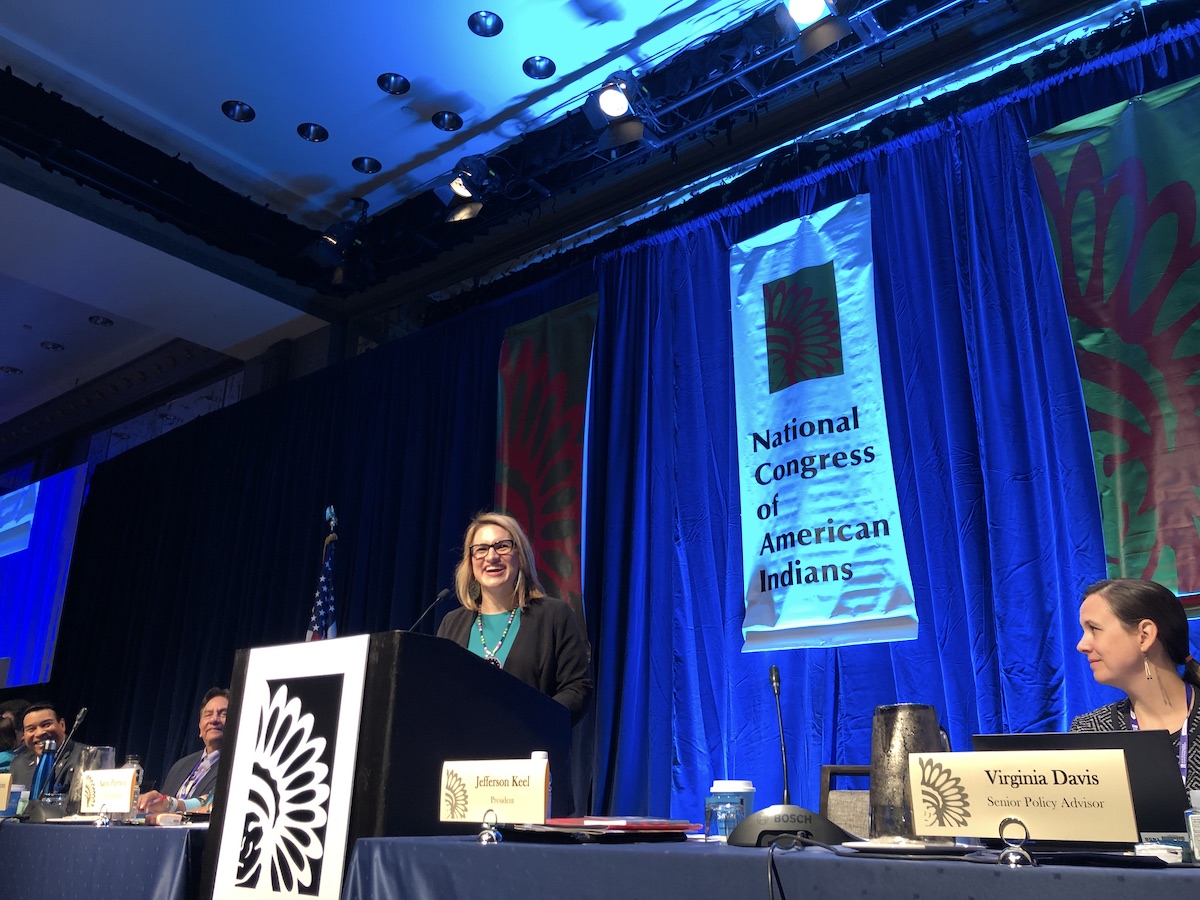Exciting, unexpected, challenging and rewarding: Peggy Flanagan’s first 100 days
First Native woman as Minnesota’s lieutenant governor says, 'It’s ‘an honor and humbling to be able to demonstrate a path and space forward for young Native women’
Indian Country Today
Minnesota Lieutenant Governor Peggy Flanagan of the White Earth Nation shoulders a uniquely Native responsibility when it comes to governing. Unlike most of the United State’s elected officials, Flanagan must answer to the “auntie burden.”
“My aunties will come for me if I don’t do the work,” she said.
Flanagan said her first 100 days in office have been exciting, unexpected, challenging and rewarding.
“We’ve done quite a bit of work in these first 100 days,” said Flanagan, the first Native American woman to serve as Minnesota’s lieutenant governor. Her work with Governor Tim Walz has included hiring 24 state agency commissioners and creating a state budget. Flanagan said the pair’s work began even before they officially took office.
“We met with our One Minnesota Transition Advisory Board made up of leaders across the state who helped us identify priorities for commissioners we were hiring and help in putting a budget together and helping us lay the groundwork for community engagement,” she said.
“Our advisory board looks like the state of Minnesota and includes small family farmers, tribal leaders, members of the Black and Hmong communities,” Flanagan said.
“We are doing our work while looking through a lens of equity and inclusion; we believe that people directly affected by policy should have a seat at the table,” she said.
Having a tribal member as lieutenant governor also adds an increased level of accountability towards the state’s Native American tribes and community according to Flanagan. Notably, Minnesota’s executive order regarding tribal and state consultation expands those of past administrations. Executive order 19-24 requires each state agency to identify a tribal liaison and create a timeline for tribal consultation. Past orders exempted some agencies. During a speech at White Earth’s State of the Nation address on April 4, Flanagan described the executive order. “It is time for policy being done to Indian people to stop, and for policy to be done in partnership with Native Nations to begin and continue. That order changes that.” Walz’s proposed budget includes many of Flanagan’s priorities such as education, health, and community prosperity which ensures families’ access to affordable child care and other social services. “As a Native woman and child advocate, my fingerprints are all over our budget,” she said. The proposed nearly $50 billion Walz/Flanagan budget includes the following points: • The use of traditional healers and the work being done in the Native community to provide traditional, rehabilitative, and restorative services.Today I had a great time visiting the Minneapolis American Indian Center — a space dedicated to building a healthy community for Indigenous Minnesotans. We are a committed partner in helping MAIC receive the funding needed to continue building on this inclusive community space. pic.twitter.com/PhVcCfEumV
— Lt. Governor Peggy Flanagan (@LtGovFlanagan) April 2, 2019
• Invests in training at the Minnesota Department of Transportation that support our commitment to respect treaty rights and tribal sovereignty across all levels of state government.
• Stabilizes and equalizes funding for American Indian tribal schools for the first time to ensure our state better serves American Indian students.
• Supports culturally specific reentry programs for Indigenous people who are incarcerated, so that they have the tools they need to successfully reenter communities and reconnect with families.
• Funds the formation of a task force on Missing and Murdered Indigenous Women to address the growing crisis facing our Indigenous communities across our state and country.
• Provides full funding for investments in tribes’ child welfare delivery system to support the costs of out-of-home placements, helping to ensure more American Indian children are placed with people they know and trust.

Join the Conversation

